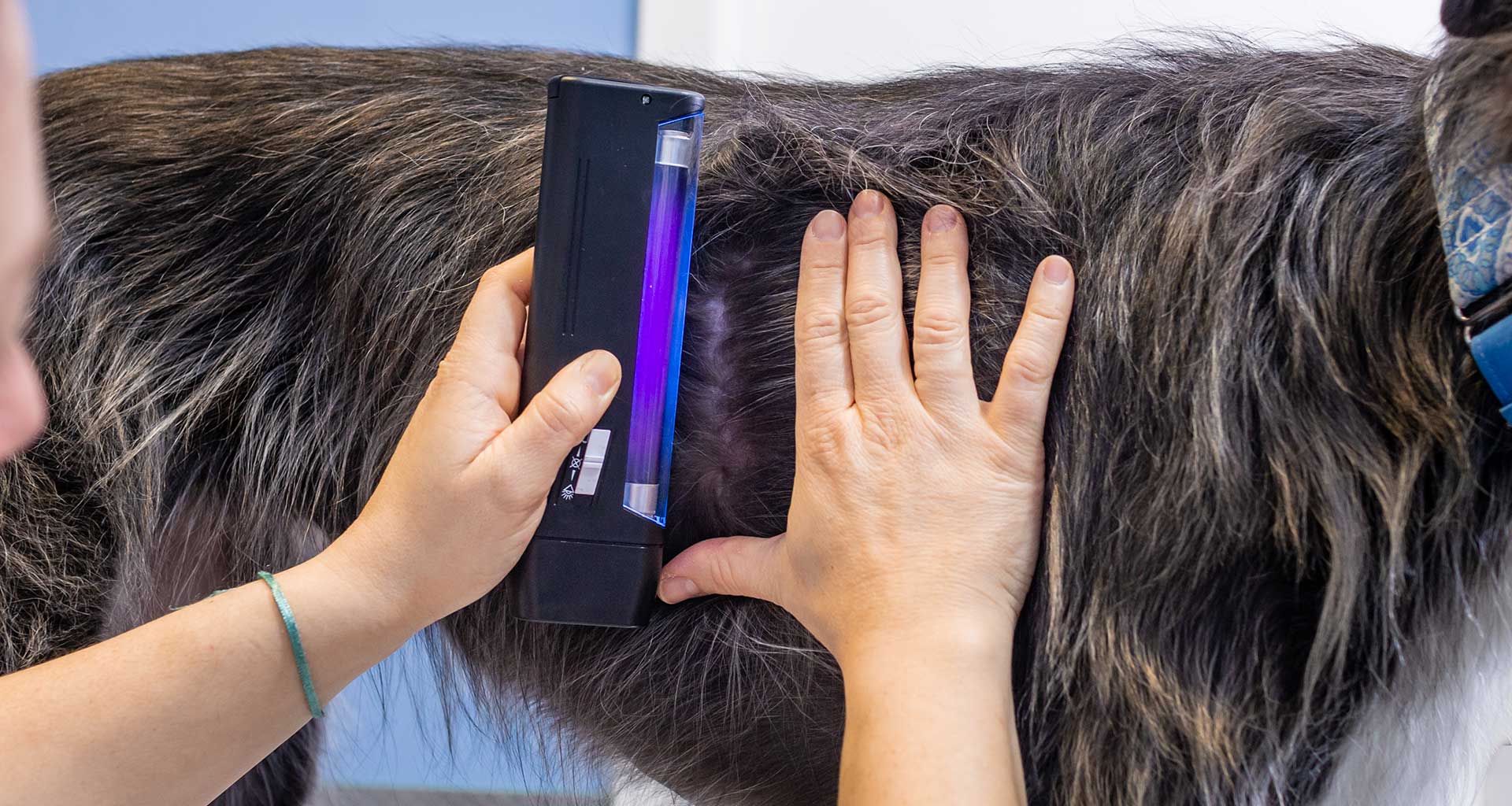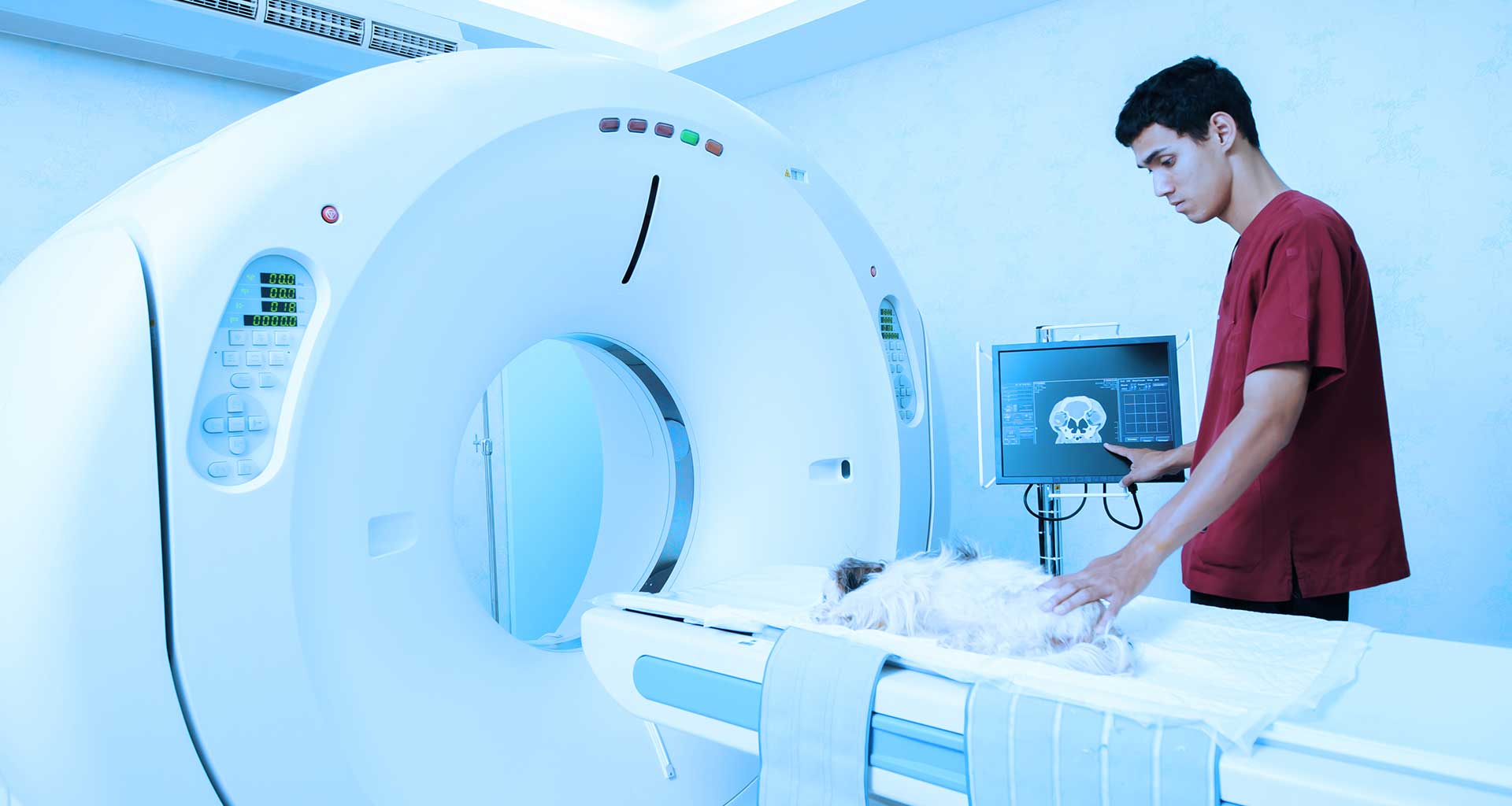4 common questions
about blood work and your pet
Pets can’t say how they’re feeling—it’s usually how they look or act that tells you something is wrong. Blood testing goes a step further, showing us the earliest signs of illness, often before your pet even seems to be sick. Testing gives us immediate insights that we might not otherwise discover. And treating your pet early can help with a better outcome and lower treatment costs, too.
How does blood work help my pet?
Blood testing can frequently detect illness in your pet before we can see any outward signs of disease. Early detection means earlier prevention and treatment. Testing healthy pets during wellness visits gives us your pet’s normal baseline values to compare to later.
What are the tests you’ll run on my pet?
We’ll routinely perform a complete blood count (CBC) and a complete blood chemistry panel, including electrolytes and urinalysis. The CBC tells us if there is infection, inflammation or anemia. The chemistry panel and electrolytes tell us if your pet’s liver, kidneys and pancreas are healthy and performing as they should. A urinalysis tells us if there’s infection or inflammation in the urinary tract—a common problem for pets of all ages. A T4 test provides information about your pet’s thyroid gland function. This is extremely important because thyroid disease is common in dogs and older cats.
Why is it better to have results right away?
Immediate results allow immediate treatment. Blood testing takes only a few minutes and can save lives and costs in the long run. In-house blood testing lets you be more involved in your pet’s care, as you and your veterinarian can discuss the results right away. If they’re abnormal and we need to run more tests, there will be fewer trips back and forth. If the results are normal, your veterinarian can rule out certain diseases right away so you can worry less. And that’s better for you and your pet.
What is a preanesthetic screen and why is it important?
We perform this blood work the morning of your pet’s surgery, dentistry or other procedure that requires anesthesia. It includes all the tests listed above and lets us know if anesthesia is safe for your pet. If we have concerns after we see the test results, we can reschedule the surgery for a day when your pet feels better. Or we can adjust the anesthesia to be safer for your pet that day. You’ll need to fast your pet the night before anesthesia, for the most accurate test results. Testing the same day as surgery means your pet has to skip a meal only once and you need to make just one trip to the clinic. We know that’s easier for both of you!
Chemistry
Glucose: Glucose is the basic nutrient for the body. It is highly regulated in the blood stream, but does fluctuate for a few hours after eating. Glucose changes may be seen with a variety of metabolic diseases and various organ system abnormalities.
Kidneys: Kidneys are responsible for filtering metabolic waste products, excess sodium and water from the blood stream which is then transferred to the bladder for excretion.
Primary Laboratory Tests for Kidneys:
BUN, CREA—metabolic waste products that the kidneys remove from the blood stream
Urinalysis—physical, chemical and microscopic evaluation of urine
Secondary Laboratory Tests for Kidneys:
Na, K, Cl, TCO2, Anion Gap—potential electrolyte imbalances
PHOS, Ca—potentially impacted by decreased renal function ALB—protein potentially decreased with loss through malfunctioning kidneys
Liver: The liver is a large organ with many different functions. It processes the blood by removing both bacteria and toxins as well as further breaking down many of the complex nutrients absorbed during the digestion of food into much smaller components for use by the rest of the body.
Primary Laboratory Tests for Liver:
ALT—liver cell enzyme indicating liver cell injury
ALKP, GGT—liver enzymes that may support bile obstruction ALB—protein produced in liver potentially decreased with impaired liver function
Secondary Laboratory Tests for Liver:
BUN, GLU, GLOB—potential indicators of decreased function TBIL, CHOL—potential support for bile obstruction TRIG—potential indicator of lipid metabolism dysfunction
Pancreas: The pancreas is a small organ located near the small intestines and is responsible for producing several digestive enzymes and hormones that help regulate metabolism.
Primary Laboratory Tests for Pancreas:
AMYL, LIPA—pancreatic enzymes potentially supporting cell injury/inflammation
BUN, CREA—if increased, may interfere with AMYL interpretation
Secondary Laboratory Tests for Pancreas: GLU—potential indication of diabetes related to pancreatic disease
Ca, ALB—potential decrease associated with pancreatic inflammation
ALT, ALKP, GGT, TBIL, CHOL, TRIG—potential
secondary liver disease
Electrolytes: Electrolytes (Na, K, Cl, TCO2, Anion Gap) are critical to body function and must be maintained in very narrow limits. Dehydration is a common cause of electrolyte imbalances, despite how effective the body is at regulating the concentration levels.
Hematology
Red Blood Cells: Red blood cells (RBCs) are the most numerous and longest living of the different types of blood cells and typically make up almost half of the blood’s volume. RBCs contain a special protein called hemoglobin (HGB) that binds to the oxygen in the lungs and enabled the RBC to transport the oxygen as it travels through the rest of the body. Reticulocytes are immature red blood cells and are produced by the bone marrow.
RBC, HCT, HBG—measures of red blood cell mass MCV, MCH, MCHC, RDW—measurements describing the RBCs
RETIC—immature RBCs increased during times of increased RBC production
White Blood Cells: White blood cells are primarily responsible for fighting infections. There are five different types of white bloods cells and each one performs specific functions to keep the body healthy.
NEU—Neutrophils are most common and help fight bacterial infections
LYM—Lymphocytes are a component of the immune system and produce antibodies
MONO—Monocytes ingest large particles and help clear areas with tissue injury
EOS—Eosinophils are involved in allergic responses and parasitic diseases
BASO—Basophils are uncommon and are involved in allergic and parasitic disease.
Platelets: Platelets play a critical role in preventing bleeding
Thyroxine: Thyroxine (T4), produced by the thyroid gland, is a hormone essential for growth and metabolism.
Urine
Urinalysis: Urinalysis includes physical, chemical and microscopic evaluation of urine and this evaluation provides additional information about the kidney and liver as well as the general well being of animals.





